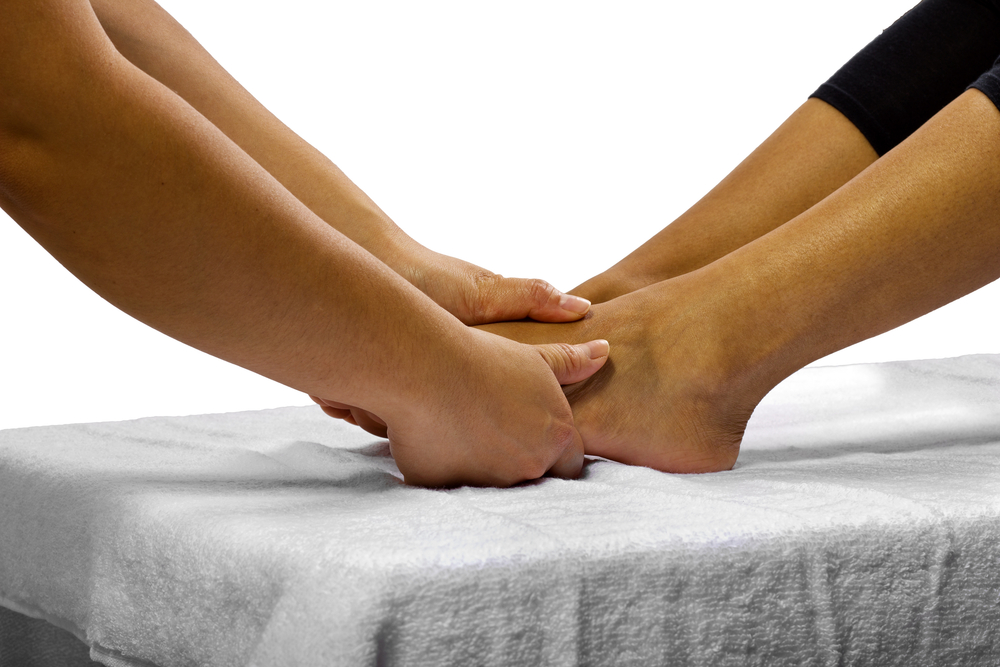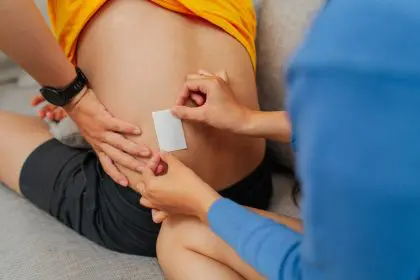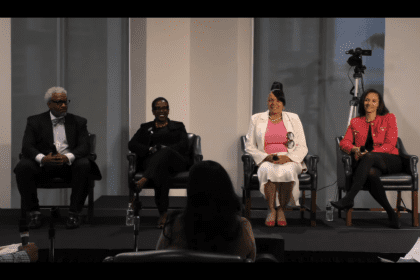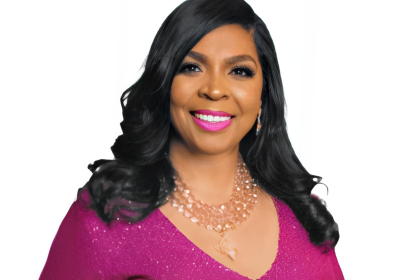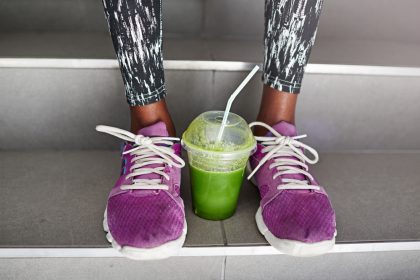Your feet are doing way more than just carrying you from place to place, they’re actually running a sophisticated anti-aging program that most people completely ignore. While you’re investing in expensive creams and supplements to fight the effects of time, the most powerful fountain of youth might be hiding in your shoes, waiting for you to pay attention to it.
The health and strength of your feet directly influence everything from your posture and balance to your brain function and hormone production. When your feet are weak, stiff, or poorly functioning, it creates a cascade of problems that accelerate aging throughout your entire body. But when your feet are strong and mobile, they can literally reverse many signs of aging from the ground up.
Most people treat their feet like they’re just platforms to stand on, stuffing them into restrictive shoes and ignoring them until something hurts. But your feet contain a quarter of all the bones in your body, along with intricate networks of muscles, joints, and sensory receptors that are constantly communicating with your brain about balance, movement, and spatial awareness.
Why your feet are your body’s aging control center
Your feet serve as your primary interface with the ground, and this connection is far more important for healthy aging than most people realize. Every step you take sends proprioceptive signals through your nervous system that help maintain balance, coordination, and cognitive function. When these signals become weak or distorted due to foot problems, your entire body starts aging faster.
The intricate muscle networks in your feet act like natural shock absorbers that protect your joints, spine, and brain from the impact forces of walking and movement. When foot muscles become weak or imbalanced, other parts of your body have to compensate, leading to joint wear, spinal problems, and the kind of movement restrictions that make people look and feel old.
Your feet also contain thousands of nerve endings that provide crucial sensory feedback to your brain about your position in space and the surface you’re walking on. This sensory information helps maintain the reflexes and automatic adjustments that keep you upright and moving gracefully. As this foot-brain connection weakens with age, falls and injuries become more likely.
The circulation in your feet directly affects the health of your entire cardiovascular system. Your heart has to work against gravity to pump blood down to your feet and back up again, and strong foot muscles help with this process through their pumping action during walking. Poor foot circulation can contribute to systemic cardiovascular problems that accelerate aging throughout your body.
How weak feet make your whole body age faster
When your feet lose strength and mobility, it triggers a domino effect of compensation patterns that age your entire body. Your ankles become stiff, your calves tighten, your hips shift forward, and your spine curves in unnatural ways to maintain balance. This cascade of postural changes creates the hunched, shuffling appearance we associate with aging.
Foot weakness also affects your gait pattern, making you take shorter, more cautious steps that reduce the natural movement variability your body needs to stay healthy. This restricted movement pattern leads to muscle atrophy, joint stiffness, and the kind of movement fear that keeps older adults sedentary and frail.
The reduced sensory input from weak or numb feet compromises your brain’s ability to maintain balance and spatial awareness. Your brain starts relying more heavily on visual cues to maintain stability, which works fine until you encounter stairs, uneven surfaces, or low-light conditions where visual information isn’t sufficient to prevent falls.
Poor foot function also affects your sleep quality because foot discomfort and circulatory problems can cause restless legs, cramping, and other issues that disrupt rest. Since quality sleep is crucial for cellular repair and hormone production, foot problems that interfere with sleep accelerate aging in ways you might never connect to your feet.
The barefoot advantage that modern life stole from you
Human feet evolved to function without shoes, developing complex muscular and sensory systems that work best when they can interact directly with varied terrain. Modern footwear, especially shoes with elevated heels, thick soles, and narrow toe boxes, essentially puts your feet in casts that weaken them over time.
Shoes with cushioned soles reduce the sensory feedback your feet send to your brain, gradually diminishing the proprioceptive awareness that helps maintain balance and coordination. This sensory dulling contributes to the increased fall risk and movement hesitancy that many people experience as they age.
The elevated heels found in most shoes, including many athletic shoes, shorten your calf muscles and Achilles tendons while weakening the small muscles in your feet. This creates a chain reaction of tightness and weakness that travels up through your entire body, contributing to the forward head posture and rounded shoulders that make people look older.
Narrow toe boxes squeeze your toes together and prevent them from spreading naturally during weight-bearing activities. This toe crowding weakens the intrinsic foot muscles and reduces the stability your feet can provide, forcing other parts of your body to work harder to maintain balance and proper movement patterns.
The simple exercises that turn back time
Toe spreading exercises can begin reversing years of shoe-related foot weakness in just a few weeks. Simply spreading your toes apart as wide as possible and holding for several seconds helps strengthen the intrinsic foot muscles while improving the toe mobility that’s essential for balance and push-off power during walking.
Calf raises performed barefoot with a focus on pushing through your toes rather than just lifting your heels can dramatically improve the strength of your entire foot-ankle complex. This exercise also helps restore the natural springiness to your step that makes movement look and feel more youthful.
Single-leg balance exercises with your eyes closed challenge your feet to provide better sensory information to your brain while strengthening all the small stabilizing muscles that prevent falls. Start with just a few seconds and gradually work up to longer holds as your foot strength and proprioception improve.
Walking backward, either on a treadmill or in a safe outdoor space, forces your feet and lower legs to work in ways they rarely experience in forward walking. This backward movement pattern helps restore muscle balance and movement variability while improving the sensory feedback systems that keep you stable and coordinated.
How foot massage unlocks anti-aging benefits
Regular foot massage does much more than just feel good, it actually stimulates circulation, improves lymphatic drainage, and activates pressure points that can affect your entire body’s function. The improved blood flow from foot massage helps deliver nutrients to tissues while removing waste products that contribute to aging.
Self-massage with a tennis ball or specialized foot roller can help break up fascial restrictions and adhesions that limit foot mobility and contribute to pain and stiffness. Just a few minutes of rolling your feet daily can improve flexibility and reduce the compensatory movement patterns that age your entire body.
Massage of specific pressure points on your feet may help stimulate the parasympathetic nervous system, promoting relaxation and better sleep quality. Since chronic stress and poor sleep are major contributors to accelerated aging, anything that helps activate your body’s rest and repair systems has anti-aging benefits.
The sensory stimulation from foot massage also helps maintain the nerve pathways between your feet and brain, preserving the proprioceptive awareness that’s crucial for balance and coordination as you age. Regular foot massage essentially helps keep these communication channels open and functioning optimally.
The temperature therapy that rejuvenates from the ground up
Alternating hot and cold water treatments for your feet can dramatically improve circulation while providing a form of vascular exercise that benefits your entire cardiovascular system. This contrast therapy helps strengthen blood vessel walls and improve the efficiency of your circulatory system.
Cold water exposure for your feet triggers the release of norepinephrine and other hormones that can boost metabolism, improve mood, and enhance cognitive function. These same hormonal responses have been associated with increased longevity and resistance to age-related diseases.
Hot water soaks help relax tight muscles and improve joint mobility in your feet and ankles, which can have positive effects that travel up through your entire kinetic chain. Better foot and ankle mobility translates to better movement quality throughout your body.
The contrast between hot and cold temperatures also stimulates nerve function and can help improve the sensory feedback your feet provide to your brain. This enhanced nerve function supports better balance and coordination while helping maintain the reflexes that prevent falls and injuries.
Why strong feet equal a sharp brain
The connection between your feet and your brain is much stronger than most people realize, with foot health directly affecting cognitive function and mental sharpness. The complex sensory processing required to interpret signals from your feet helps maintain neural plasticity and keeps your brain actively engaged in motor control tasks.
Balance training that challenges your feet also challenges your brain, forcing it to integrate sensory information from multiple sources and make rapid adjustments to maintain stability. This type of cognitive-motor integration helps preserve brain function and may protect against age-related cognitive decline.
The improved circulation that comes from better foot health delivers more oxygen and nutrients to your brain while helping remove metabolic waste products that can impair cognitive function. Your brain uses about 20% of your body’s oxygen supply, so anything that improves circulation has direct benefits for mental performance.
Strong, healthy feet also support more active lifestyles, and physical activity is one of the most powerful interventions for maintaining brain health and preventing age-related cognitive decline. When your feet can carry you comfortably and confidently, you’re more likely to stay active and engaged with the world around you.
The posture transformation that starts from below
Improving foot strength and alignment creates positive changes in posture that can take years off your appearance and improve your overall health. When your feet provide a stable, balanced foundation, your entire body can align properly without compensatory tensions and distortions.
Strong feet help maintain the natural curves of your spine by providing proper support from the ground up. This improved spinal alignment reduces compression forces on your vertebrae and discs while allowing your organs to function optimally in their proper positions.
Better foot function also improves your breathing by allowing your ribcage to maintain its natural position and movement patterns. Shallow, restricted breathing is both a cause and consequence of poor posture, and improving foot health can help break this cycle from the foundation up.
The confidence that comes from better balance and stability also affects how you carry yourself, creating a more youthful, energetic appearance that reflects your improved physical capabilities. When you feel stable and strong on your feet, it shows in your entire demeanor and movement quality.
Your feet are your fountain of youth
The anti-aging benefits of foot health extend far beyond just preventing falls or foot pain. Your feet are integral components of your body’s movement system, circulatory network, sensory apparatus, and even your cognitive function. Investing time and attention in foot health pays dividends throughout your entire body.
Starting an anti-aging program with your feet makes sense because improvements in foot strength, mobility, and function create positive changes that ripple upward through your entire body. Better feet lead to better movement, better posture, better circulation, and better overall health.
The simple exercises and practices that improve foot health are accessible to almost everyone, regardless of age or fitness level. You don’t need expensive equipment or complicated routines, just the commitment to paying attention to the foundation that supports everything else your body does.
Your feet have been carrying you through life, often without much appreciation or care. It’s time to return the favor by giving them the attention they deserve and unlocking their potential to help you age more gracefully and maintain your vitality for years to come.

